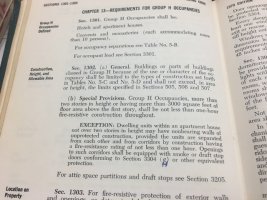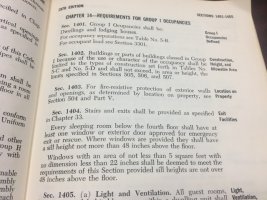Yikes
SAWHORSE
My cliet has a very old apartment building. Their funder wants to know that it complied with code at time of construction, since there is no proof that the gyp board (probably button board) had a fire-rating.
So, my question is: what UBC code edition first required dwelling unit separation (demising) walls to have a fire rating?
So, my question is: what UBC code edition first required dwelling unit separation (demising) walls to have a fire rating?


